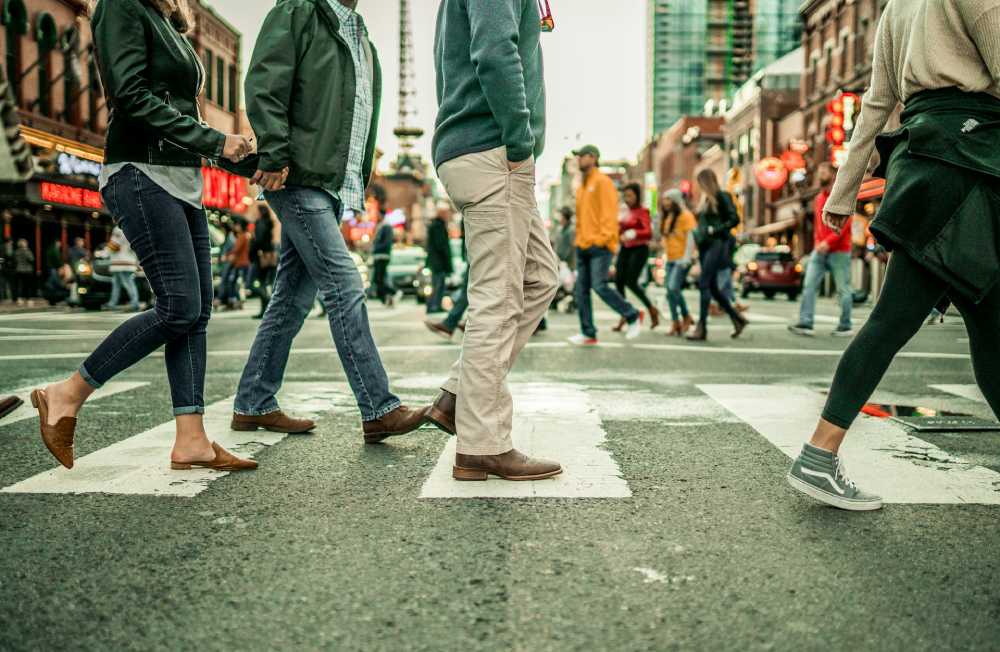What Predominately Leads to Pedestrian Accidents?
Although pedestrians account for only 11% of all travel here in The United States, they are involved in about 13% of accident-related deaths. Pedestrian accidents occur when motorists are struck by automobiles while not paying attention to the road or walkways.
Drivers can become distracted by cell phones, radios, and other digital devices. They might also be under the influence of drugs or alcohol, which can affect their reflexes and judgment.
Failing to Yield
Even if a pedestrian is crossing a street in a marked crosswalk or is using overhead pedestrian bridges and tunnels, they still must be mindful of their surroundings. The law says that pedestrians should not suddenly leave the curb or another place of safety to enter a road where they could pose an immediate hazard to vehicles or delay traffic unnecessarily.
Failure to yield is frequently a contributing factor in significant pedestrian injuries, in addition to careless driving and racing through stop signs being a regular cause of accidents. Drivers distracted by their phones, texting, music or other passengers in the vehicle may not see a pedestrian entering an intersection and fail to yield.
In turn, the pedestrian is hit by the car and injured. Sometimes, the driver is cited for violating State laws regarding failing to yield to pedestrians. These drivers often face expensive tickets and other consequences. A person wounded in an Omaha pedestrian accident who is less than 50% at blame for the incident has the right to ask the other parties involved for compensation.
However, pedestrians will not be permitted to request reparation if their fault percentage exceeds 50%. Injured pedestrians must seek legal help from an Omaha pedestrian accident attorney to recover compensation.
Distracted Driving
In many cases, cars hit pedestrians because drivers are not paying attention. The most common cause of this is distracted driving, which includes everything from texting and calling on phones to adjusting the radio or temperature in the car and even eating or reading.
Pedestrians are at particular risk of being struck by distracted drivers because they often cross roads and streets without the protection of a thick metal shell or sturdy bumper. As a result, they can sustain serious—and sometimes fatal—injuries in the event of an accident.
Pedestrians are also frequently hit by vehicles making left-hand turns. It is because drivers tend to focus on whether or not it’s safe for them to turn, forgetting about pedestrians who might be crossing the road at that time.
This problem is especially prevalent in urban areas, at night, in non-intersection locations, and in parking lots. It’s important for pedestrians to always use the crosswalk when possible and to be aware of the area of their surroundings at all times.
Poor Visibility
Whether you are a driver or pedestrian, taking a moment to be aware of your surroundings can save your life. When you fail, you are at greater risk of being hurt or even killed.
Poor weather conditions can make it difficult or impossible for a driver to see a pedestrian in the crosswalk. Road construction can also interfere with a driver’s ability to stop for pedestrians safely.
Pedestrians are more likely to get hit by cars at night and in areas with less traffic control, such as parking lots. Also, drivers making left-hand turns are more likely to hit pedestrians, as they are concentrating on other cars and their favor rather than the area in front of them.
Pedestrians can also make street mistakes, such as darting into traffic or failing to use designated crosswalks. These errors can all result in severe injuries. Injuries in these accidents can be catastrophic.
Walking the Wrong Way
Even if you follow the rules of the road, you may still be hit by a vehicle. Several factors can cause pedestrian accidents, including talking on the phone or texting while walking, being physically impaired or ill, using drugs and alcohol, crossing streets not marked with a crosswalk, or walking in areas where cars travel too fast.
Accidents involving pedestrians can occur anywhere but more frequently in cities, at junctions, and night. Poor weather conditions can also affect visibility, making it harder for drivers to see pedestrians or vice versa. Drivers who fail to yield, drive recklessly, or are distracted or impaired can cause serious injuries to pedestrians.







0